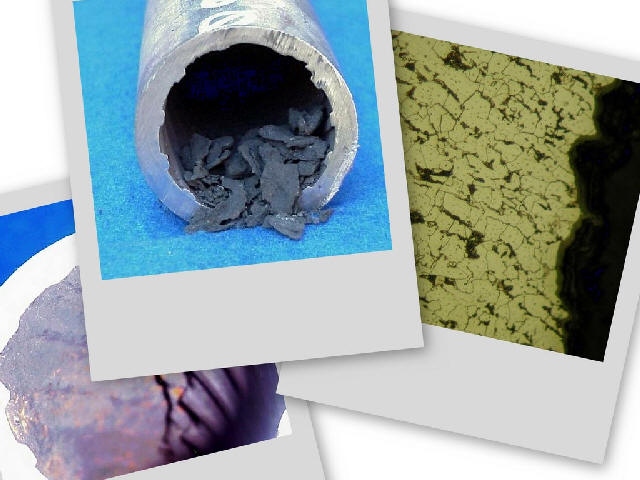|
Caustic Gouging
Sodium hydroxide (NaOH) is used extensively in boiler water
treatment to maintain the optimum hydroxyl ion concentration
range to form a protective magnetite film on steel surfaces and
to help form nonadherent sludges when hardness enters the boiler
water. However, excessive sodium hydroxide can destroy the
protective film and corrode the base metal . NaOH can
concentrate during departure from nucleate boiling (DNB), film
boiling or steam blanketing conditions. Concentration also
occurs when normal boiler water evaporates beneath deposits
leaving behind the caustic at the metal surface. The effect of
tube metal gouging beneath deposits is shown in the
photomacrograph.

Caustic gouging can
also occur due to evaporation along a waterline without
significant accumulation of deposit .
In these cases, solubilized sodium ferroite is removed from the
base tube metal, but then hydrolyzes and precipitates elsewhere
in the boiler as magnetite when the concentrated water is
diluted by normal boiler water. |



